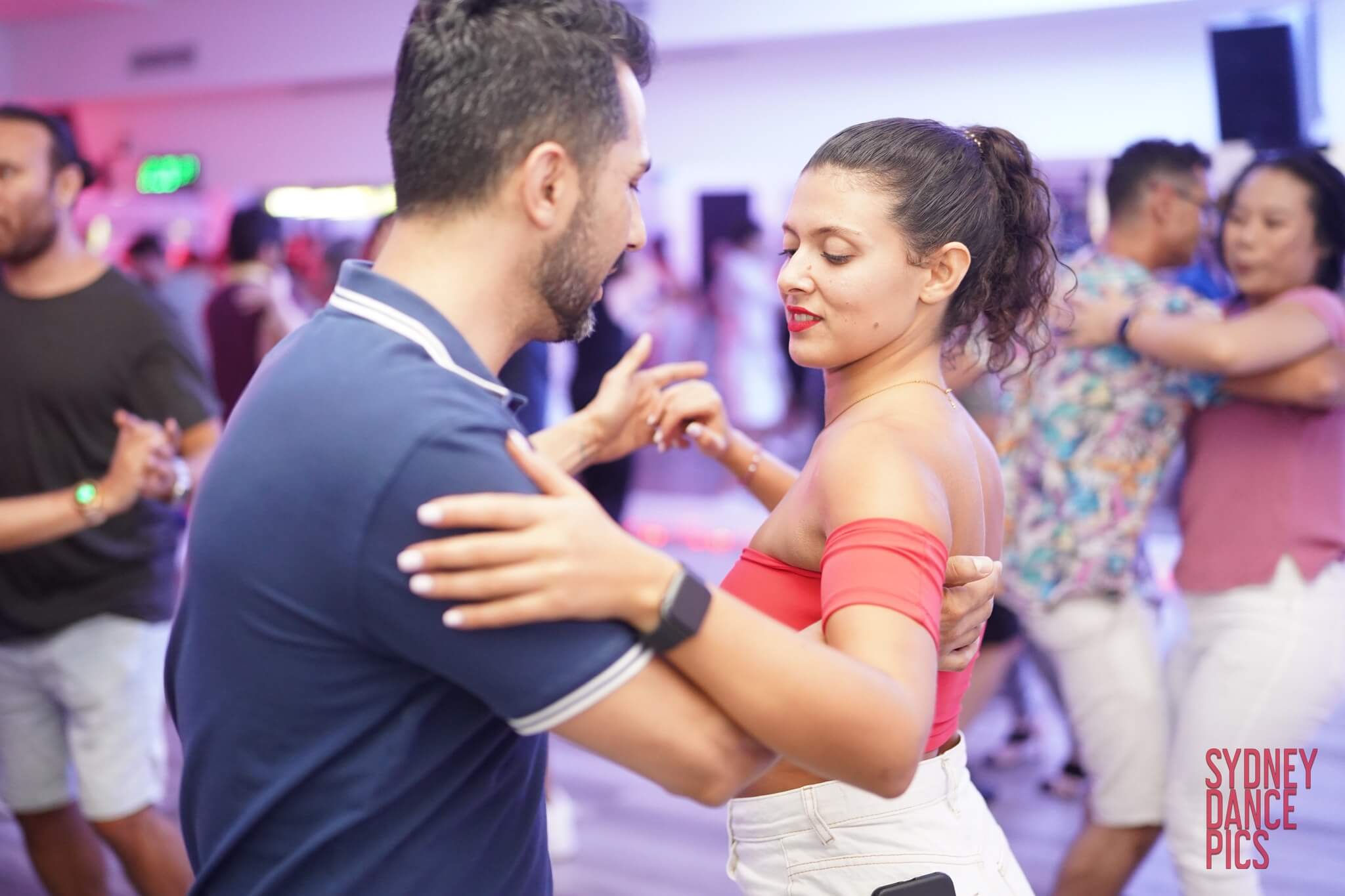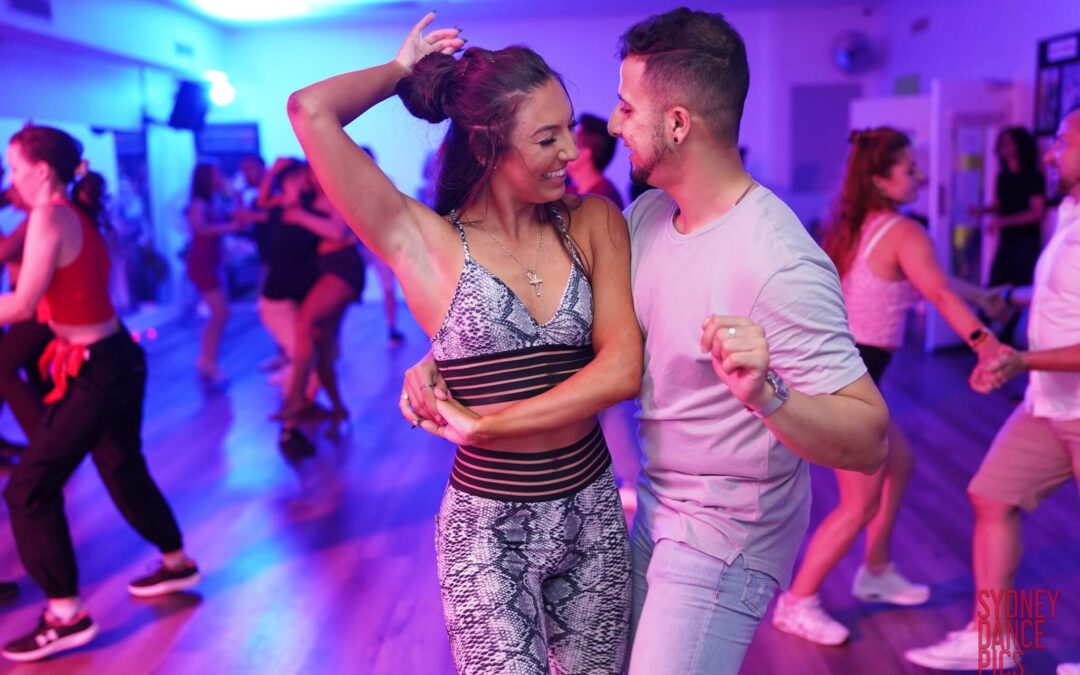Dancing, like any other sport, can lead to overuse injuries. This is because achieving excellence in any sport demands specialisation in movement, which requires a shift away from generalisation in movement. We get better at moving in a particular way and less great at moving in a general (and often more balanced) way. Salsa and Bachata dancers repeat movements to one side, leaning toward body imbalances over time. Particular areas of concern seem to be the neck, right shoulder, right hip, lower back and knees.
When participating in Salsa, Bachata, or other Latin dance forms, it’s important to consider various factors to prevent injuries. These factors encompass repetitive movements, dancing in crowded spaces, wearing heels, maintaining body awareness, refining your dance skills, and taking your personal history of physical wellness and injuries into account. It’s crucial to be mindful of dancing with a partner who might lead too forcefully, employ improper techniques, or navigate erratically on a crowded dance floor, as these factors can elevate the risk of accidents.
From the perspective of a follower, let’s explore what our bodies are consistently exposed to:
Neck
Salsa dancing often incorporates dynamic movements, such as dips, which can infuse excitement and style into your dance routine. However, it’s vital to exercise caution as improper execution of dips may increase the risk of neck injuries. To minimise this risk during salsa dancing, it’s crucial to adhere to proper technique.
Bachata (particularly Sensual Bachata) dancing today has a strong influence from Zouk, which includes a great amount of head rolls and back dips. If you are new to this, you may have experienced the tender neck and shoulder pain from repeatedly throwing your head around the day or two before.
Ensure that both you and your dance partner are well-versed in executing dips and upper body movements correctly. Proper technique entails maintaining excellent posture and alignment throughout dips and head rolls, with a keen focus on supporting the head and neck. Effective communication between dance partners is paramount; both the leader and the follower should be synchronised in terms of timing and execution when performing a dip. Additionally, it’s important for the follower to feel comfortable declining a dip without causing any offence to the leader.
Right Shoulder
When our shoulder is elevated into flexion, it is ideally complemented by external rotation rather than internal rotation from a biomechanical sense. Unfortunately this is not the case in Salsa and Bachata dancing, where shoulder flexion is often coupled with shoulder internal rotation. Internal rotation of the shoulder involves inward rotation of the upper arm or shoulder. When this motion is combined with shoulder flexion, particularly if the internal rotation is excessive or forceful, it can cause the head of the humerus (the upper arm bone) to move closer to the acromion process of the scapula. This can lead to shoulder impingement syndrome.
Shoulder impingement occurs when the tendons of the rotator cuff muscles or other structures within the shoulder become compressed or irritated as they pass through the subacromial space, which is a narrow passage beneath the acromion process of the scapula (shoulder blade). This compression can lead to pain, inflammation, and a reduction in shoulder mobility.
The right shoulder is also repeatedly placed into shoulder extension coupled with internal rotation (hand behind the back) which can cause irritation to the shoulder if there is a lack of existing shoulder internal rotation or the move is initiated too forcefully by the lead.
Right Hip
Both hips are susceptible to potential issues in Salsa and Bachata dancing due to the emphasis on a gait that involves excessive hip adduction combined with a lesser degree of hip internal rotation. Excessive hip adduction places stress on the iliotibial band (ITB), which can result in hip instability and discomfort around the outer knee.
In the natural course of walking or running, your hip undergoes adduction as one leg moves closer to the midline of your body during the swing phase of your gait. During this movement, the ITB can pass over the bony prominence of your hip, known as the greater trochanter. Repetitive hip adduction, as seen in activities like running, can lead to friction between the ITB and the greater trochanter, causing irritation and inflammation of the ITB. This irritation can manifest as lateral knee pain, a common symptom of iliotibial band syndrome (ITBS). Trochanteric Bursitis can also develop due to overuse and friction.
In Salsa and Bachata dancing, the adduction movement is accentuated to create the desirable side-to-side hip movement associated with the dance style and therefore can lead to the lateral hip issues mentioned above. The right hip is particularly vulnerable to chronic injury in Salsa dancing because it is subjected to a greater number of moves and combinations that involve the follower sitting into their right hip. When considering the basic step, the right leg is positioned to the rear, resulting in more hip internal rotation, while the left leg is positioned forward for most of the dance. The extended (right) hip, combined with hip adduction and internal rotation, appears to create more stress than the flexed (left) hip with hip adduction and internal rotation. This may be attributed to the limited range of motion in hip extension. To sum it up, the fundamental Salsa step is inherently imbalanced, and with time, you may start to notice increased sensation and stress in your right hip and knee compared to your left.
Lower Back and Lower Limbs (High Heels)
High heels, in combination with a typically feminine dancing style (overarched lower back), can contribute to shortened hamstrings, hyperextended knees, shortened calf muscles, lower back pain and an anteriorly or forward-tilted pelvis.
High heels are a significant factor in chronic lower limb pain. Transitioning from flat footwear to high heels can result in persistent muscle shortening, leading to sensations of discomfort, fatigue, reduced shock absorption, and an increased risk of injury. A case study involving healthy female subjects demonstrated that a 13cm increase in heel height caused a 5% shortening of the gastrocnemius (calf) muscle, while the Achilles tendon remained largely unaffected. Computational simulation models from the study suggest that the muscle gradually adapts to its new functional length through a chronic loss of sarcomeres in series. The degree of sarcomere loss can vary significantly within the muscle, with an average loss of 9%, minimal loss at the proximal and distal ends, and a maximum loss of 39% in the central region.
Higher heel height forces the foot into increased plantar flexion, which, in turn, leads to greater knee flexion (requiring more effort from the quadriceps to maintain an upright posture) and an exaggerated lordosis in the lower back. Wearing high heels results in a forward-tilted pelvis (lower back lordosis), which further shortens the hamstrings. With shortened hamstrings and calves, there is an elevated risk of Achilles sprains and calf strains.
You don’t have to completely forgo wearing heels, but it’s important to be mindful of any chronic issues that may arise. Consider taking periodic breaks from wearing high heels, reducing the heel height, or incorporating a specialised injury prevention exercise and mobility program to help mitigate the risk of further injuries. Use “Groover10” to receive 10% off Fuego Dance Sneakers (they are super comfortable and actually allow you to spin)!

Tips to keep you bullet-proof on the dance-floor
We definitely don’t want to stop dancing so here are some recommendations for a healthier and more sustainable experience in Salsa and Bachata dancing:
- Learn Correct Technique: Invest time in learning and mastering proper dance technique. Dance with partners you feel comfortable with who also prioritise correct form.
- Prepare Your Body: Prepare for the inevitable and promote longevity by following a well-designed strength and conditioning program. This program should focus on achieving optimal joint range of motion, joint stability, full-range strength, and maintaining aerobic conditioning. These online classes are a quick and easy place to start. Seek guidance from a fitness professional who understands the specific demands of Latin dancing. I am here to help and health rebates are also available.
- Individual Assessment: If you are currently dealing with musculoskeletal issues, consider seeking out an individual assessment to get a tailored rehabilitation or injury prevention program that addresses your unique needs.
- Warm-Up: If you can, prioritise warming up before hitting the dance floor. Even though it might not be common in social dancing settings, a warm-up can significantly reduce the risk of injuries.
- Stay Hydrated: Keep yourself well-hydrated during your dance sessions to support muscle function and overall well-being.
- Pick your Dance Floors: Choose dance floors that are not overcrowded with questionable people and/or dodgy flooring!
- Avoid Overuse: Be mindful of the frequency and intensity of your dancing. Balancing dance with a well-rounded physical training program, adequate rest and good nutrition is essential to prevent overuse injuries.
- Listen to Your Body: Pay attention to any pain or discomfort during dancing. If you experience persistent discomfort, it’s crucial to seek guidance from a healthcare professional you so can keep enjoying your dancing!
In conclusion, while the joy of salsa and bachata dancing is undeniable, it’s crucial to recognize the potential risks they pose to our bodies, particularly regarding hip injuries like trochanteric bursitis. This article has highlighted the importance of proactive measures such as regaining optimal mobility, targeted strengthening exercises, and maintaining good form to mitigate the risk of injury during these vibrant dance sessions. By incorporating these strategies into our dance practice, we can not only safeguard ourselves against common injuries but also prolong our enjoyment of salsa and bachata dancing for years to come.
Images credit: Sydney Dance Pics.
References
https://pubmed.ncbi.nlm.nih.gov/26537804/ – Prevention of shoulder injuries in overhead athletes: a science-based approach.
https://pubmed.ncbi.nlm.nih.gov/25451524/ – On high heels and short muscles: a multiscale model for sarcomere loss in the gastrocnemius muscle.
https://pubmed.ncbi.nlm.nih.gov/25542398/ – The effect of angle and moment of the hip and knee joint on iliotibial band hardness.
https://pubmed.ncbi.nlm.nih.gov/25969366/ – Gluteal Tendinopathy: A Review of Mechanisms, Assessment and Management.
https://pubmed.ncbi.nlm.nih.gov/27927638/ – Assessment of shoulder pain for non-specialists.
